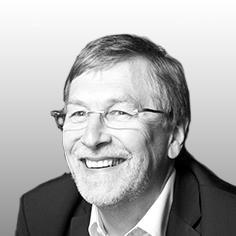These vast cities rising from the sand can’t just be about bling

In the four years since we opened our studio in Abu Dhabi, our team has sought to gain a deeper appreciation of the cultural, social, environmental and economic drivers which underpin the cities of the Middle East. This enables us to better understand how best we can help shape their future developments.
A striking feature of the region is that despite it being home to some of the oldest civilisations in the world, how recently its urban areas have developed. In the space of less than a couple of generations, cities with two or three million residents have risen from the sand. Today, one of the biggest challenges facing the area is to transform what were effectively first generation oil towns into sustainable world cities which are driven by dynamic, mixed and resilient economies. Cities which are able to compete in a global marketplace and which will have a rationale and appeal which extends beyond their petrochemical origins.
We need to ensure that the new settlements endure with human-scale infrastructure including social facilities
Leaders across the region have clearly grasped this ambition. New economic growth is being shaped around sectors such as finance, tourism, high-tech manufacturing aerospace and logistics crowned by flagship events such as the Formula One Grand Prix, Dubai Expo and Qatar World Cup. This transformation has a strong physical dimension. To attract, grow and retain new enterprises and a highly skilled workforce, the focus is now on promoting mixed use development, investing in high quality public transport, creating a high quality public realm and improving sustainability.
Steve Potter, BDP’s planning director, is leading our work in Kuwait which is at the forefront of this economic and spatial agenda. His team is preparing new state wide policies there for workplace, retail and leisure developments to meet the economic needs of a rapidly growing population.
[A masterplan] managed to incorporate the Leaning Tower of Pisa, the Acropolis, Coliseum, Pyramids and Eiffel Tower all within a single neighbourhood
Of course the region has also given rise to some unusual and entertaining design. Steve’s personal award for “bling architecture” goes to a masterplan recently exhibited at one of the Cityscape conferences within which the designer had managed to incorporate the Leaning Tower of Pisa, the Acropolis, Coliseum, Pyramids and Eiffel Tower all within a single neighbourhood. Only after a few minutes of gazing in amazement at the vast model did it become apparent that these architectural wonders had been woven together into a plan form which when viewed from a passing aeroplane (or on Google Earth) would resemble a vast bird of prey! Fortunately it seems that the combined impact of the recent economic downturn and the Arab Spring is now bringing about a more considered approach to design across the region which hopefully, will place greater weight on the economic and social values of development.
To my mind, using the experience we have gained in Western Europe from centuries of city planning, we really can make a worthwhile contribution to the development of new communities in the Middle East (as well as other parts of the developing world). We need to ensure that the new settlements endure with human-scale infrastructure including social facilities and thoughtful, well-considered city planning to create a platform for future communities to thrive in this fast-growing region.
David Cash is chairman of BDP


























No comments yet